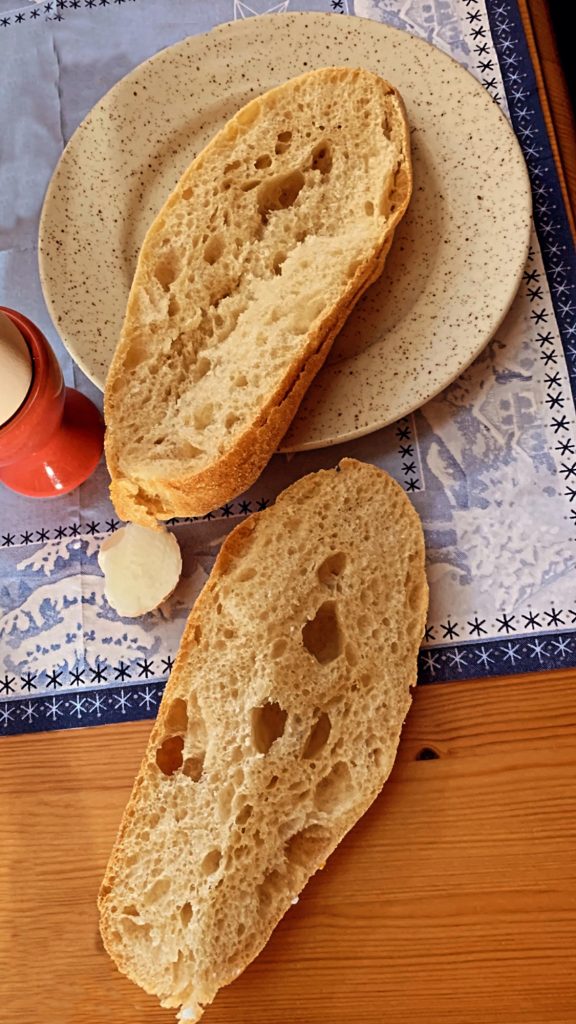There is nothing that represents France as much as the baguette: the long white bread with the aromatic taste is famous all over the world. Classically, the baguette is accompanied by red wine, grapes and cheese: it’s the symbol par excellence of French culinary art. Like any baked good, the baguette has its own history: Who invented the baguette? What does Napoleon have to do with the invention of the baguette?
Napoleon and the baguette
The myth that Napoleonic military bakers invented the baguette persists to this day: For the soldiers, it was easier to transport a long loaf of bread than a round loaf. To this day, it’s not clear whether this is more than just a myth: in any case, it was Napoleonic soldiers who spread the conventional white bread throughout Europe on their campaigns.
A conventional white bread differs from the baguette only in its shape and the dough: The baguette is characterized by long dough and low yeast content.
Viennese bakery
In 1839, the Austrian August Zang opened the first Viennese bakery in France: in doing so, he changed the French art of baking until today. He used a steam oven – as was customary in Vienna at the time: This caused the crust of the baked goods to shine. By the end of the 19th century, the steam oven had become widely used in bakeries in France: As a result, there is a touch of Viennese baking in almost every French pastry. Even the baguette gets its shiny appearance from baking in a steam oven.
Starting in 1840, August Zang sold Viennese bread (French pain viennois), now known as baguette, in his bakery. Zang also baked Kipferl in his bakery, which were adapted by the French as croissants.

Baguette as an alternative
It is the love of bread crust that characterizes a baguette: as early as the 17th century, the French baked thin and long breads in oder to get a better crust. The French have always felt the need to give their bread a special crust. This is what a baguette thrives on.
Historical events also promoted the advance of the baguette in France: during the First World War, there was a shortage of ingredients and raw materials everywhere – thus bakeries were also short of ingredients and raw materials. The baguette was much easier and faster to produce than conventional bread. In addition, there was a law in France from 1919, according to which bakers were no longer allowed to work at night: Since a baguette could be prepared quickly in the morning, it was a welcome alternative for bakers.
These are the reasons why the word baguette first appeared in French annals in 1920: two years after the end of the First World War, white bread experienced a renaissance. For many years, the production of white bread fell victim to food shortages. The former Viennese bread now bore the name baguette: Eighty years after the French first came into contact with the long white bread, they had adopted the Viennese tradition.
Traditional baguette
Although much has changed over the centuries, a baguette is still characterized by its characteristic crust and a long dough. Last but not least, deep, long and sloping incisions are characteristic of a baguette.
In 1993, the French Prime Minister passed a decree manifesting the production of traditional French baguette: A traditional French baguette should contain only wheat flour, water, salt and yeast and must be baked in an artisan bakery (French: boulangerie artisanale). The addition of additives and chemical fermenters was thus prohibited: In the wake of the decree, many bakers went back to making their own baguettes.
Cover picture: Freshly baked demi-baguettes, © Simon von Ludwig, all rights reserved
Main sources: Chevallier, Jim: “About the Baguette: Exploring the Origin of a French National Icon”, 2014 Chez Jim Books

 Deutsch
Deutsch Français
Français